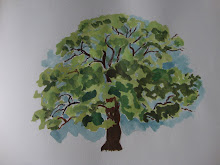Grandparents on Strike
Not in India. But the UGT ( General Workers Union) in Spain has asked grandparents to protest and go on a strike the coming Wednesday ( 29 September). Some have called it a ‘generational revolt’. Half of the grandparents’ population in Spain looks after their grandchildren on a daily basis. They take care of their daily needs, feed them, bathe them, take them to school, putting in atleast 8-9 hours of work each day
Spanish work culture has probably something to do with this trend. Long lunch hours force the workers to stay back longer and employees are not allowed to leave before the boss leaves office. Work hours thus get stretched. Child care is expensive. And parents are obvious choice for free child care.
It is a fact that the unpaid work of the senior population in Spain has helped prop up the country’s economy. Children are free to pursue their careers.
The UGT has urged Babysitter grandparents to say NO and not feel guilty about it. It would be interesting to see what actually happens next week.
While it is tiring, most grandparents do enjoy having the children in their care. Doctors argue that this keeps the elders active and healthier and happier, but there will always be some for whom this is a burden.
My children missed having their grandmothers around, but the grandfathers made up for it. My father loved having my children at home with him during the day. Of course, there was someone to change the nappies. He was not too good when they were still babies. But as soon as they began to respond and gurgle and laugh at his little trick of sliding his spectacles down his nose, he would warm up to them. And when they showed signs of understanding the spoken word, he was at his best. Teaching them nursery rhymes, no not the simple Jack and Jill, but longer ones like 'This is the House that Jack built..... and continously talking or reading to them, pointing out flowers, flags, birds and animals. By the time my children were 3 and before they started school they could identify the flags of each country . Of course, it was done without pressure like only a grandparent can, and the children picked it up without any problem. It was not study, it was only fun.
The F-I-L on the other hand was great when it was nap time. He would put them across his lap and start singing carnatic songs. In the process, I picked up some songs too ( for someone who was only listened to English pop at that time, it was a surprise for me too). And all stories from Mahabharata to Three Musketeers were narrated as they grew older. Of course Rama was Raman and so on… And to this day, they are so good at Indian mythology.
This is the generation of the jetsetting grandparents. . They travel across continents. There are some who do admit it is tough as they grow older. The stress of travel, the lack of household help, the cold… but the love for both their children and the little ones keeps them going. And of course, the youngsters do throw in a visit to Niagara Falls or to the White House as perks!
I am not a grandparent yet. I will wait ... am in no major hurry. But I do peek into the childrens section at the bookstore and look at the colourful little books and dream of reading them to a little one sitting on my lap. Of course, I am not thinking of nappy changing and bottle feeding. I will worry about that later. It will take some time getting used to that again! But going on a strike? As a parent ....maybe, but as a grandparent... never.
Not in India. But the UGT ( General Workers Union) in Spain has asked grandparents to protest and go on a strike the coming Wednesday ( 29 September). Some have called it a ‘generational revolt’. Half of the grandparents’ population in Spain looks after their grandchildren on a daily basis. They take care of their daily needs, feed them, bathe them, take them to school, putting in atleast 8-9 hours of work each day
Spanish work culture has probably something to do with this trend. Long lunch hours force the workers to stay back longer and employees are not allowed to leave before the boss leaves office. Work hours thus get stretched. Child care is expensive. And parents are obvious choice for free child care.
It is a fact that the unpaid work of the senior population in Spain has helped prop up the country’s economy. Children are free to pursue their careers.
The UGT has urged Babysitter grandparents to say NO and not feel guilty about it. It would be interesting to see what actually happens next week.
While it is tiring, most grandparents do enjoy having the children in their care. Doctors argue that this keeps the elders active and healthier and happier, but there will always be some for whom this is a burden.
My children missed having their grandmothers around, but the grandfathers made up for it. My father loved having my children at home with him during the day. Of course, there was someone to change the nappies. He was not too good when they were still babies. But as soon as they began to respond and gurgle and laugh at his little trick of sliding his spectacles down his nose, he would warm up to them. And when they showed signs of understanding the spoken word, he was at his best. Teaching them nursery rhymes, no not the simple Jack and Jill, but longer ones like 'This is the House that Jack built..... and continously talking or reading to them, pointing out flowers, flags, birds and animals. By the time my children were 3 and before they started school they could identify the flags of each country . Of course, it was done without pressure like only a grandparent can, and the children picked it up without any problem. It was not study, it was only fun.
The F-I-L on the other hand was great when it was nap time. He would put them across his lap and start singing carnatic songs. In the process, I picked up some songs too ( for someone who was only listened to English pop at that time, it was a surprise for me too). And all stories from Mahabharata to Three Musketeers were narrated as they grew older. Of course Rama was Raman and so on… And to this day, they are so good at Indian mythology.
This is the generation of the jetsetting grandparents. . They travel across continents. There are some who do admit it is tough as they grow older. The stress of travel, the lack of household help, the cold… but the love for both their children and the little ones keeps them going. And of course, the youngsters do throw in a visit to Niagara Falls or to the White House as perks!
I am not a grandparent yet. I will wait ... am in no major hurry. But I do peek into the childrens section at the bookstore and look at the colourful little books and dream of reading them to a little one sitting on my lap. Of course, I am not thinking of nappy changing and bottle feeding. I will worry about that later. It will take some time getting used to that again! But going on a strike? As a parent ....maybe, but as a grandparent... never.




